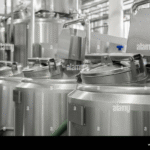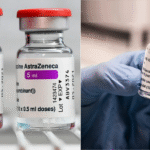How Pasteurization Works: Simple Infographic Guide
Pasteurization is a key process that makes dairy and beverages safe for consumption by killing harmful microorganisms. But how exactly does pasteurization work? Here’s a simple infographic-style blog post designed for easy reading and social media sharing.
🥛 What is Pasteurization?
Definition:
Pasteurization is the process of heating liquids (like milk, juice) to a specific temperature for a set time to kill harmful bacteria without affecting nutritional value.
🔬 Why is Pasteurization Important?
Destroys harmful bacteria: Kills pathogens like Listeria, Salmonella, and E. coli.
- Prevents foodborne diseases: Reduces the risk of illnesses and outbreaks.
- Extends shelf life: Reduces bacterial growth, extending product shelf life.
- Ensures safety for vulnerable populations: Protects infants, elderly, and immune-compromised individuals.
- Complies with food safety regulations: Meets regulatory requirements for food safety.
Importance in Various Industries
- Dairy: Ensures safety of milk, cheese, yogurt, and other dairy products.
- Juice and beverages: Prevents contamination and spoilage.
- Food processing: Essential for ensuring safety and quality of processed foods.
Pasteurization plays a critical role in ensuring food safety, preventing illnesses, and extending product shelf life.

——————————————————————————————
🛠️ How Pasteurization Works: Step-by-Step Infographic
Step 1: Raw Product Collection
🥛 Raw milk or juice is collected & tested for quality.
Step 2: Pre-Heating (Optional)
🌡️ Slight warming to remove air bubbles & maintain smooth flow.
Step 3: Heating to Target Temperature
🔥 Milk/Juice heated to 63°C–135°C depending on method:
- LTLT: 63°C for 30 mins
- HTST: 72°C for 15 sec
- UHT: 135°C for 2–5 sec
Step 4: Holding Time
🕒 Kept at that temperature to ensure bacteria are killed.
Step 5: Rapid Cooling
❄️ Cooled quickly to below 5°C to prevent bacterial regrowth.
Step 6: Safe Packaging
📦 Filled in sterile containers for storage & distribution.

🧪 Types of Pasteurization Methods
| Method | Temperature & Time | Used For |
|---|---|---|
| LTLT | 63°C for 30 mins | Traditional dairies |
| HTST | 72°C for 15 secs | Milk industry standard |
| UHT | 135°C for 2-5 secs | Long shelf-life milk |
| Flash Pasteurization | 85-90°C for few secs | Juices, beverages |
🏆 Benefits of Pasteurization
- ✅ Food Safety Guaranteed
- ✅ Longer Shelf Life
- ✅ Retains Nutrients
- ✅ Prevents Spoilage
- ✅ Safe for All Age Groups
Safety Benefits
- Kills harmful bacteria: Pasteurization destroys pathogens like Listeria, Salmonella, and E. coli.
- Prevents foodborne illnesses: Reduces the risk of illnesses and outbreaks.
- Protects vulnerable populations: Ensures safety for infants, elderly, and immune-compromised individuals.
Quality Benefits
- Extends shelf life: Pasteurization reduces bacterial growth, extending product shelf life.
- Preserves nutritional value: Pasteurization helps preserve the nutritional value of food products.
- Maintains product quality: Ensures consistency and quality of food products.
Regulatory Benefits
- Complies with food safety regulations: Meets regulatory requirements for food safety.
- Reduces liability: Pasteurization reduces the risk of liability for food manufacturers.
Overall Benefits
- Ensures food safety: Pasteurization is a critical step in ensuring food safety.
- Protects public health: Pasteurization plays a crucial role in protecting public health.
- Supports food industry: Pasteurization is essential for the food industry, enabling the production of safe and high-quality food products.
**********************************************************************************
⚖️ Pasteurized vs Raw Milk
| Aspect | Raw Milk | Pasteurized Milk |
|---|---|---|
| Safety | High bacterial risk | Safe to drink |
| Shelf Life | Short | Extended |
| Health Risks | Can cause infections | Prevents illnesses |
| Legal Compliance | Restricted | Approved |
🧠 Quick Facts for Social Media Posts
- 🥛 Pasteurization reduces milk-borne diseases by over 95%.
- 🔥 UHT milk can stay fresh without refrigeration for 6 months.
- 👨🔬 Invented by Louis Pasteur in 1864.
- 📦 Always look for “Pasteurized” label on dairy products.
🗨️ FAQs: Common Questions
Q. Does pasteurization affect nutrients?
🔹 No major nutrient loss. Minor reduction in sensitive vitamins (like Vitamin C).
Q. Can pasteurization be done at home?
🔹 Yes! Heat milk to 63°C for 30 mins, cool rapidly, store in fridge.
Q. Is pasteurization compulsory?
🔹 Yes, in most countries to prevent foodborne diseases.
**********************************************************************************

**********************************************************************************
https://www.britannica.com/technology/pasteurization
https://pram123.com/your-refrigerator-listeria-free-essential-safe-kitchen/
**********************************************************************************
Table of Contents
Pasteurization Works Pasteurization Works Pasteurization Works Pasteurization Works Pasteurization Works Pasteurization Works Pasteurization Works












[…] AstraZeneca in India […]